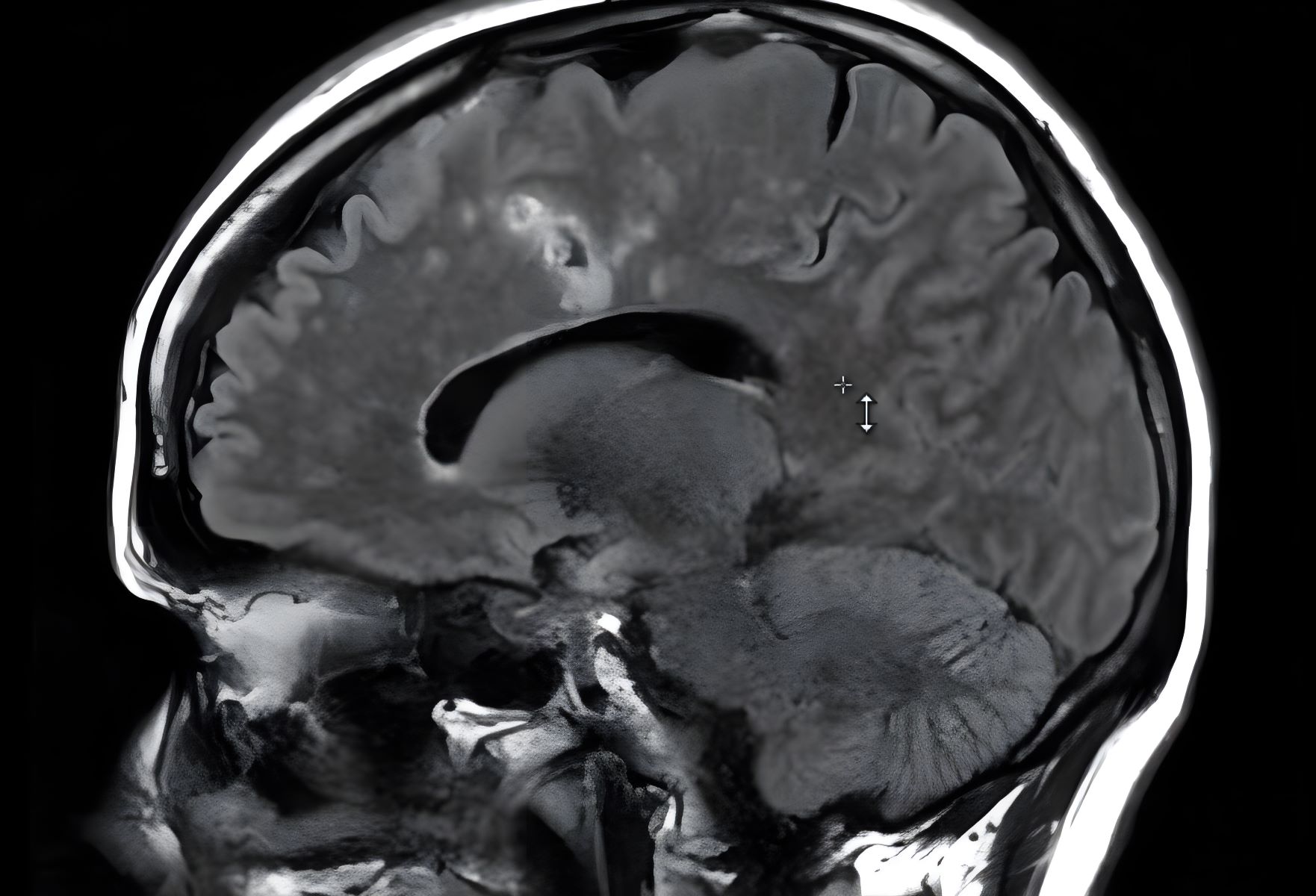
Susac's Syndrome is a rare autoimmune disease that affects the brain, eyes, and ears. But what exactly is Susac's Syndrome? This condition causes small blood vessels in these areas to become blocked, leading to a range of symptoms. These can include headaches, confusion, vision problems, and hearing loss. The syndrome is named after Dr. John Susac, who first described it in 1979. While the exact cause remains unknown, it's believed to involve the body's immune system attacking its own blood vessels. Treatment often includes medications to suppress the immune system and manage symptoms. Understanding Susac's Syndrome is crucial for early diagnosis and effective treatment. Let's dive into 50 facts about this intriguing condition.
Key Takeaways:
- Susac's Syndrome is a rare autoimmune disorder affecting the brain, eyes, and ears. It can cause confusion, vision problems, and hearing loss, and early diagnosis is crucial for effective treatment.
- Although there is no cure for Susac's Syndrome, early and aggressive treatment can help manage symptoms and prevent complications. Support groups, counseling, and assistive devices are available to help patients and their families cope.
What is Susac's Syndrome?
Susac's Syndrome is a rare autoimmune disorder that affects the brain, eyes, and ears. It was first described by Dr. John Susac in the 1970s. This condition can be challenging to diagnose due to its rarity and the variety of symptoms it presents.
- Susac's Syndrome is named after Dr. John Susac, who first identified the condition in 1979.
- It primarily affects young women between the ages of 20 and 40.
- The syndrome is characterized by a triad of symptoms: encephalopathy, branch retinal artery occlusions, and hearing loss.
- Encephalopathy refers to brain dysfunction, which can cause confusion, memory loss, and personality changes.
- Branch retinal artery occlusions can lead to vision problems, including partial or complete vision loss.
- Hearing loss in Susac's Syndrome is typically sensorineural, meaning it results from damage to the inner ear or the nerve pathways from the inner ear to the brain.
Causes and Risk Factors
Understanding the causes and risk factors of Susac's Syndrome can help in early diagnosis and management. Although the exact cause is unknown, several factors are believed to contribute to its development.
- Susac's Syndrome is thought to be an autoimmune disorder, where the body's immune system mistakenly attacks its own tissues.
- Genetic factors may play a role, as some cases have been reported in families.
- Environmental factors, such as infections, might trigger the onset of the syndrome in genetically predisposed individuals.
- Women are more likely to develop Susac's Syndrome than men, with a female-to-male ratio of approximately 3:1.
- The syndrome is rare, with fewer than 500 cases reported worldwide.
Symptoms and Diagnosis
The symptoms of Susac's Syndrome can vary widely, making diagnosis challenging. Early recognition of the signs is crucial for effective treatment.
- Common symptoms include headaches, confusion, and memory problems.
- Some patients experience psychiatric symptoms, such as depression, anxiety, or hallucinations.
- Vision problems may include blurry vision, blind spots, or sudden vision loss in one or both eyes.
- Hearing loss can be sudden or gradual and may affect one or both ears.
- Tinnitus, or ringing in the ears, is another common symptom.
- Diagnosis typically involves a combination of clinical evaluation, imaging studies, and laboratory tests.
- Magnetic resonance imaging (MRI) of the brain can reveal characteristic lesions in the corpus callosum, a key feature of Susac's Syndrome.
- Fluorescein angiography, an imaging test of the retina, can detect branch retinal artery occlusions.
- Audiometry tests can assess the extent of hearing loss.
Treatment and Management
There is no cure for Susac's Syndrome, but early and aggressive treatment can help manage symptoms and prevent complications.
- Treatment often involves immunosuppressive medications to reduce inflammation and suppress the immune system.
- Corticosteroids, such as prednisone, are commonly used to control acute symptoms.
- Intravenous immunoglobulin (IVIG) therapy may be beneficial for some patients.
- Other immunosuppressive drugs, such as cyclophosphamide or mycophenolate mofetil, might be prescribed for long-term management.
- Anticoagulants, like aspirin, can help prevent blood clots and improve blood flow to affected areas.
- Physical therapy and occupational therapy can aid in the recovery of motor skills and daily functioning.
- Regular follow-up with a multidisciplinary team, including neurologists, ophthalmologists, and audiologists, is essential for comprehensive care.
Prognosis and Long-Term Outlook
The long-term outlook for individuals with Susac's Syndrome varies, but early intervention can significantly improve outcomes.
- Some patients experience a single episode of the syndrome and recover fully with treatment.
- Others may have recurrent episodes, requiring ongoing management and monitoring.
- Early diagnosis and treatment are associated with better long-term outcomes.
- Permanent vision or hearing loss can occur in some cases, despite treatment.
- Cognitive and psychiatric symptoms may persist, affecting quality of life.
- Regular monitoring and adjustments to treatment plans are necessary to manage the condition effectively.
Research and Future Directions
Ongoing research aims to better understand Susac's Syndrome and develop more effective treatments. Advances in medical science offer hope for improved outcomes.
- Researchers are investigating the underlying genetic and immunological mechanisms of Susac's Syndrome.
- New imaging techniques are being developed to improve early diagnosis and monitoring of the disease.
- Clinical trials are exploring the efficacy of novel immunosuppressive therapies.
- Patient registries and collaborative research networks are helping to gather data and improve understanding of the syndrome.
- Advances in personalized medicine may lead to more tailored treatment approaches for individuals with Susac's Syndrome.
- Increased awareness and education among healthcare professionals can lead to earlier diagnosis and better management of the condition.
Living with Susac's Syndrome
Living with Susac's Syndrome can be challenging, but support and resources are available to help patients and their families cope.
- Support groups and online communities can provide valuable information and emotional support.
- Counseling and mental health services can help patients manage the psychological impact of the syndrome.
- Assistive devices, such as hearing aids or visual aids, can improve quality of life.
- Educational resources and advocacy organizations can help raise awareness and promote research.
- Patients and families should work closely with healthcare providers to develop a comprehensive care plan.
- Maintaining a healthy lifestyle, including a balanced diet and regular exercise, can support overall well-being.
- Stress management techniques, such as mindfulness and relaxation exercises, can help cope with the challenges of the syndrome.
- Regular medical check-ups and monitoring are essential to manage symptoms and prevent complications.
- Open communication with healthcare providers is crucial for effective management and support.
- Staying informed about the latest research and treatment options can empower patients and families.
- Building a strong support network of family, friends, and healthcare professionals can make a significant difference in living with Susac's Syndrome.
Final Thoughts on Susac's Syndrome
Susac's Syndrome, though rare, has a significant impact on those affected. Understanding its symptoms, such as encephalopathy, hearing loss, and retinopathy, is crucial for early diagnosis. Treatments often involve immunosuppressive therapy to manage inflammation and prevent further damage. While there's no cure, early intervention can improve quality of life.
Raising awareness about this condition helps in recognizing symptoms sooner and getting appropriate care. If you or someone you know shows signs of Susac's Syndrome, consulting a healthcare professional is vital. Support groups and resources are available to provide assistance and information.
Knowledge is power. By staying informed, we can better support those living with Susac's Syndrome and contribute to ongoing research efforts. Let's continue to spread awareness and understanding of this rare but impactful condition.
Frequently Asked Questions
Was this page helpful?
Our commitment to delivering trustworthy and engaging content is at the heart of what we do. Each fact on our site is contributed by real users like you, bringing a wealth of diverse insights and information. To ensure the highest standards of accuracy and reliability, our dedicated editors meticulously review each submission. This process guarantees that the facts we share are not only fascinating but also credible. Trust in our commitment to quality and authenticity as you explore and learn with us.


